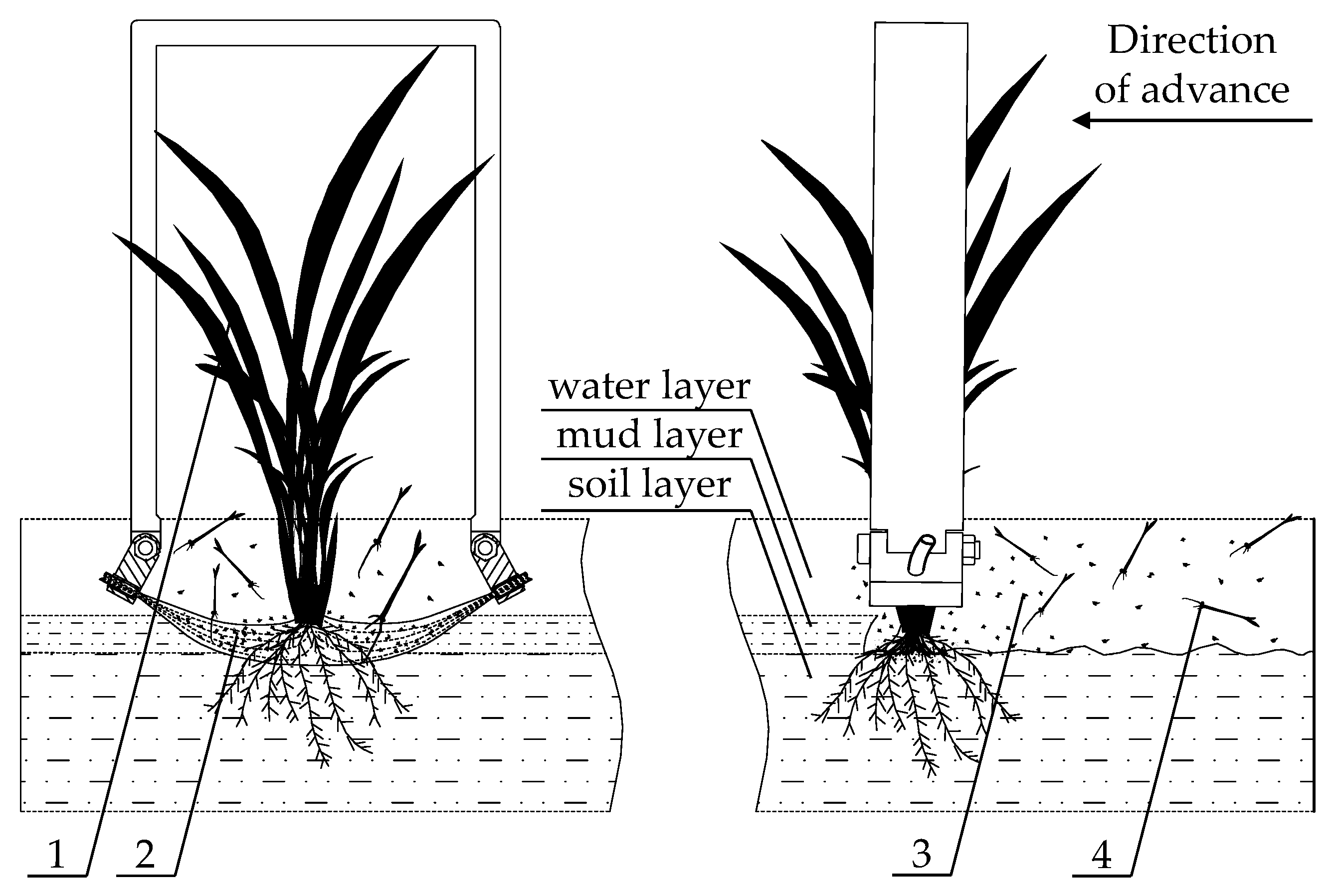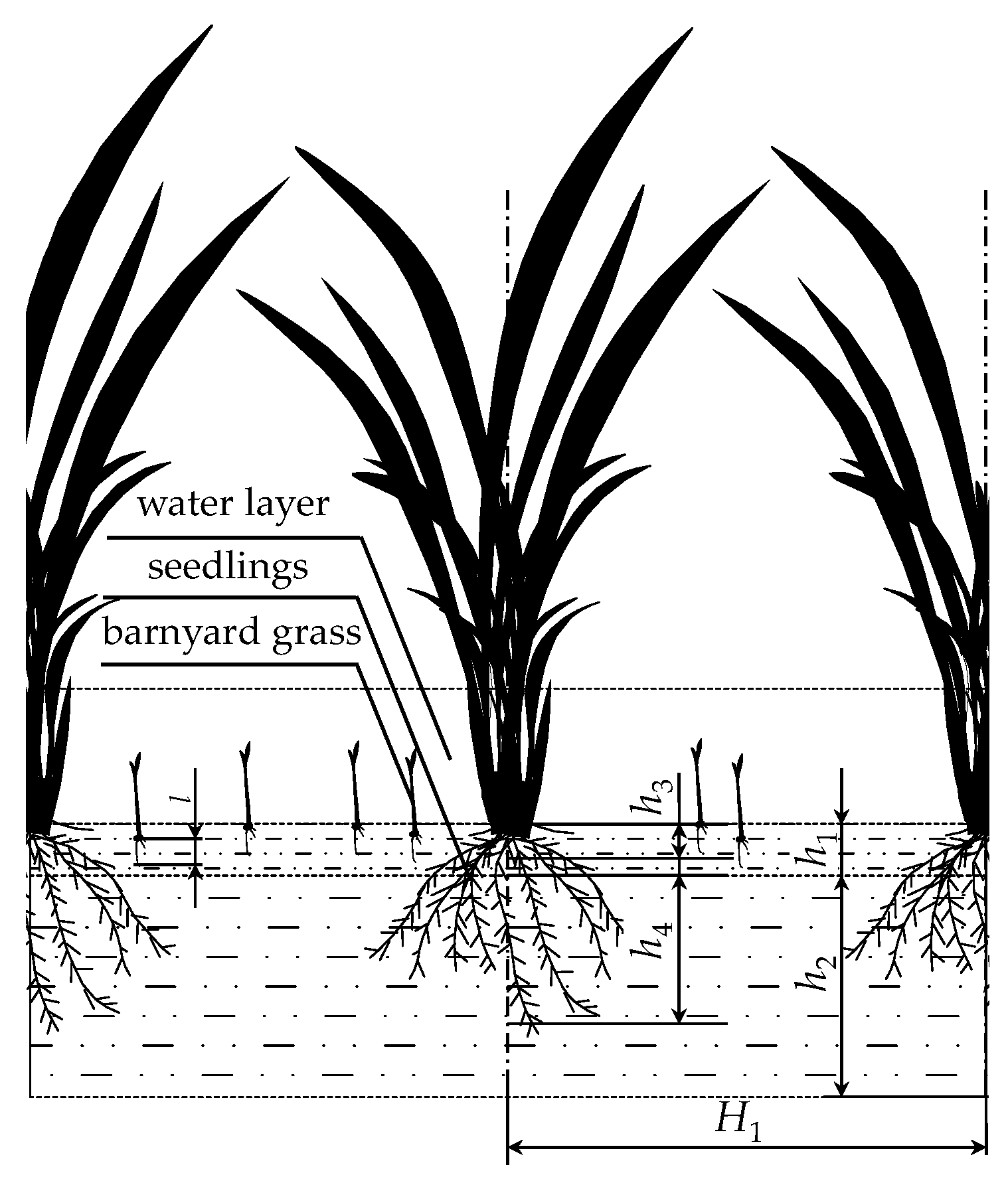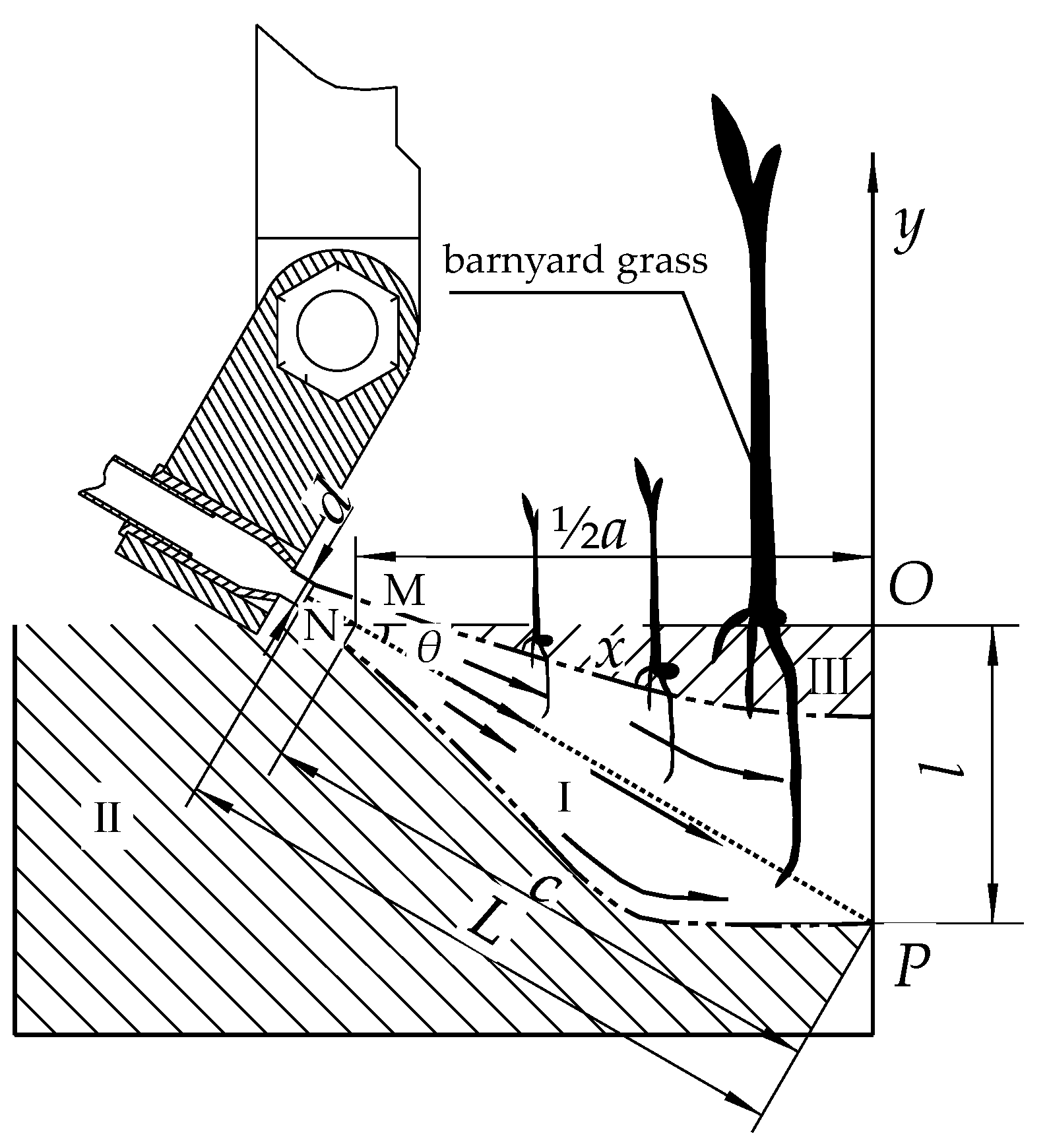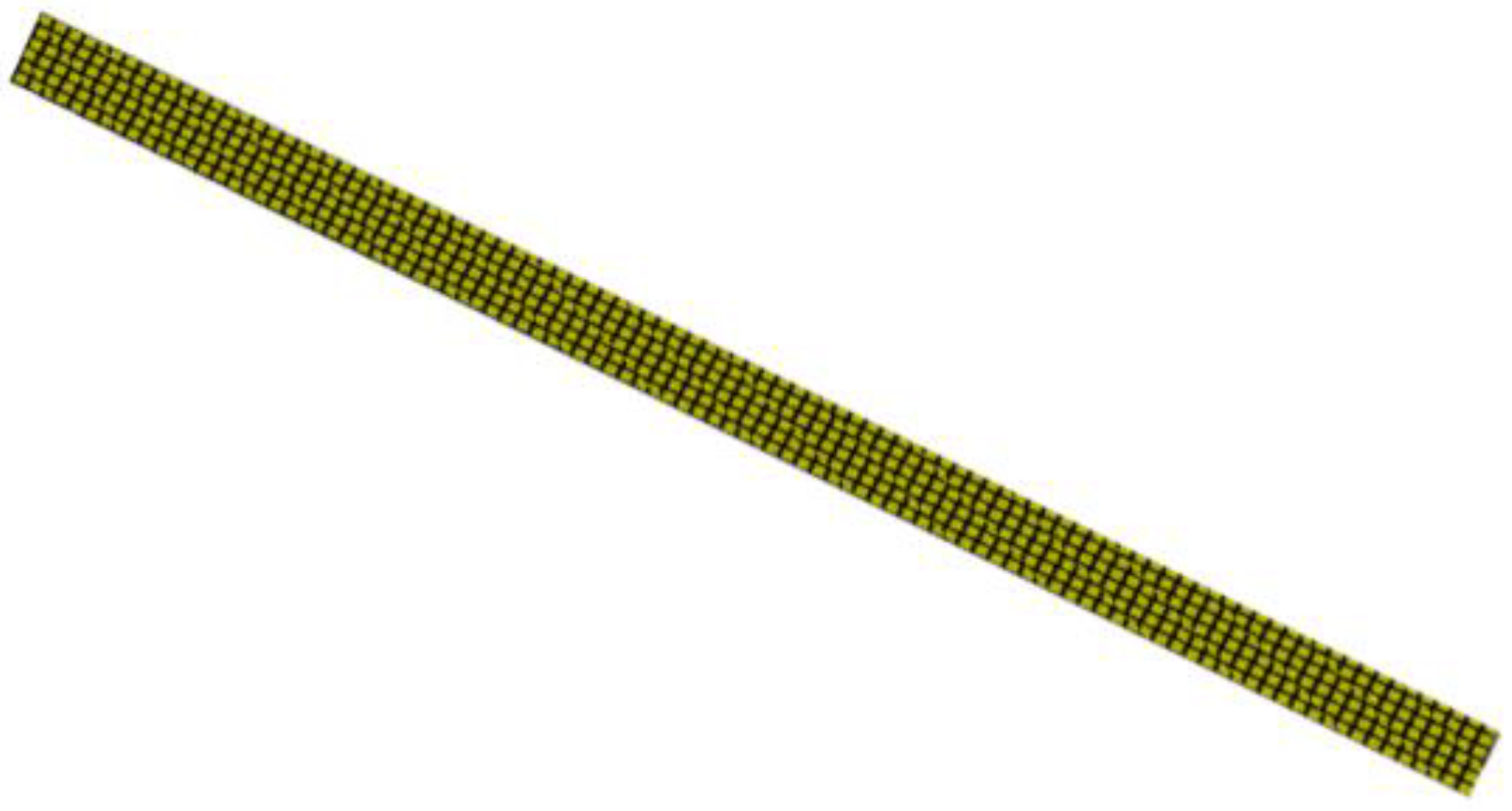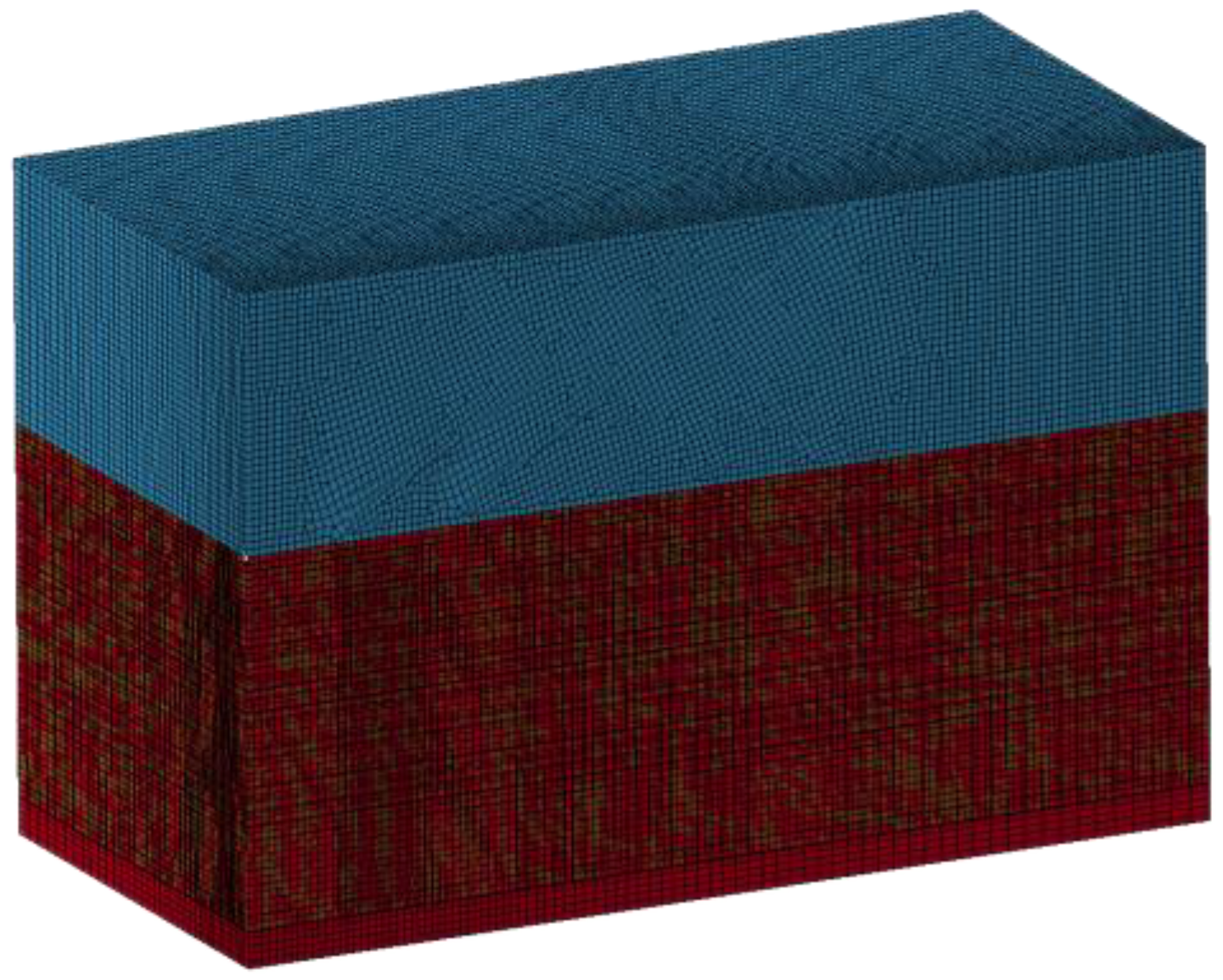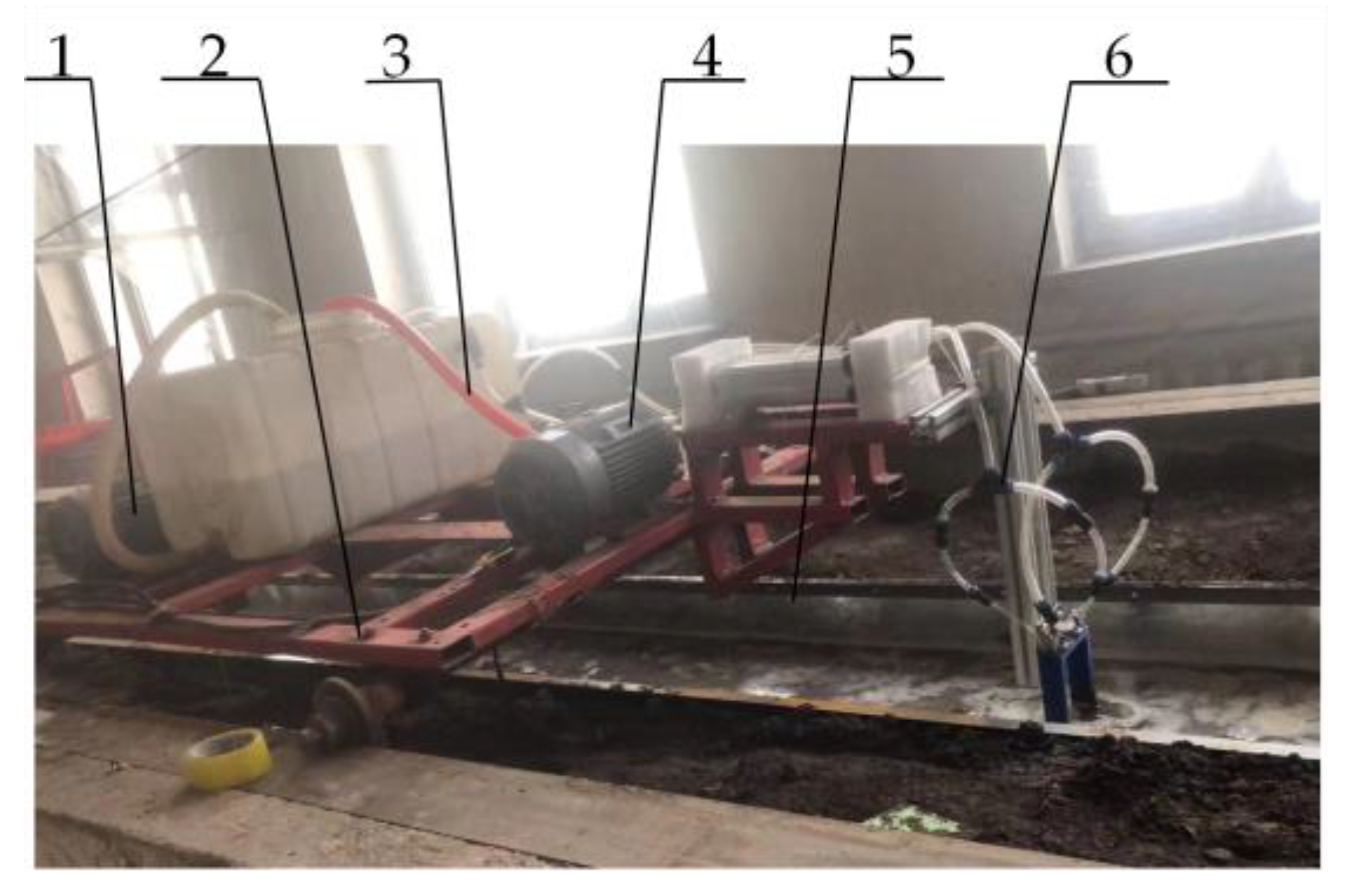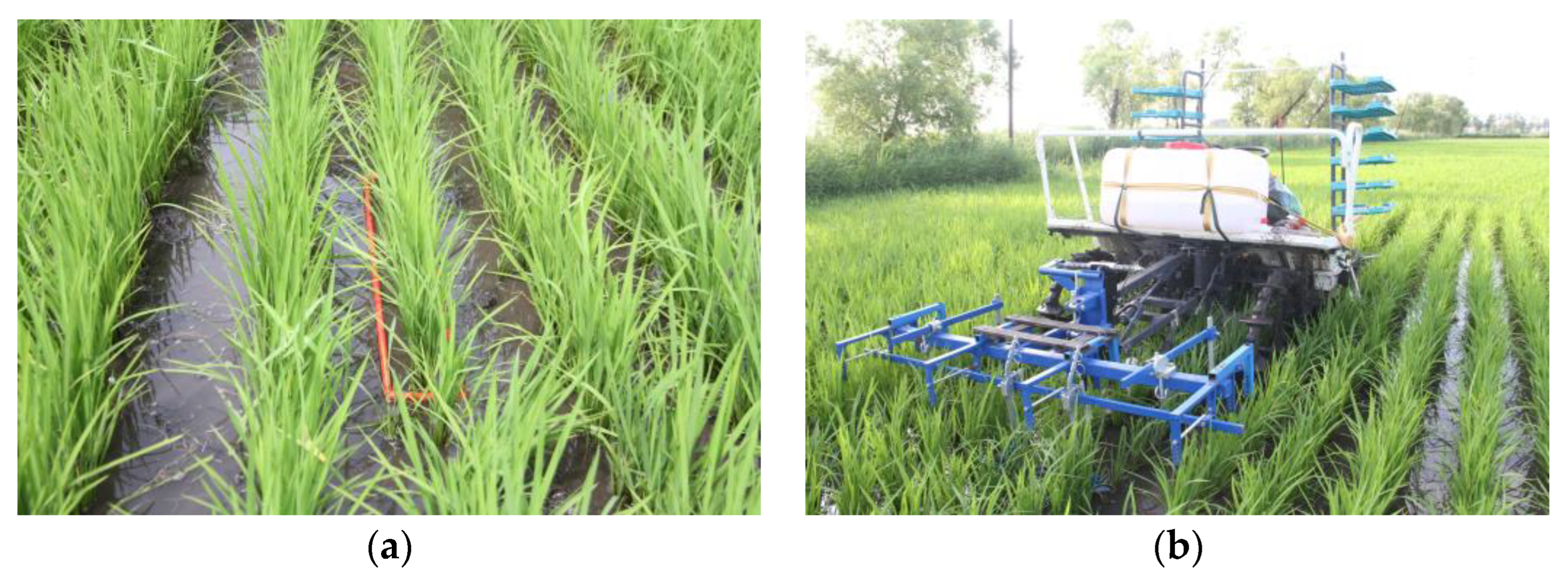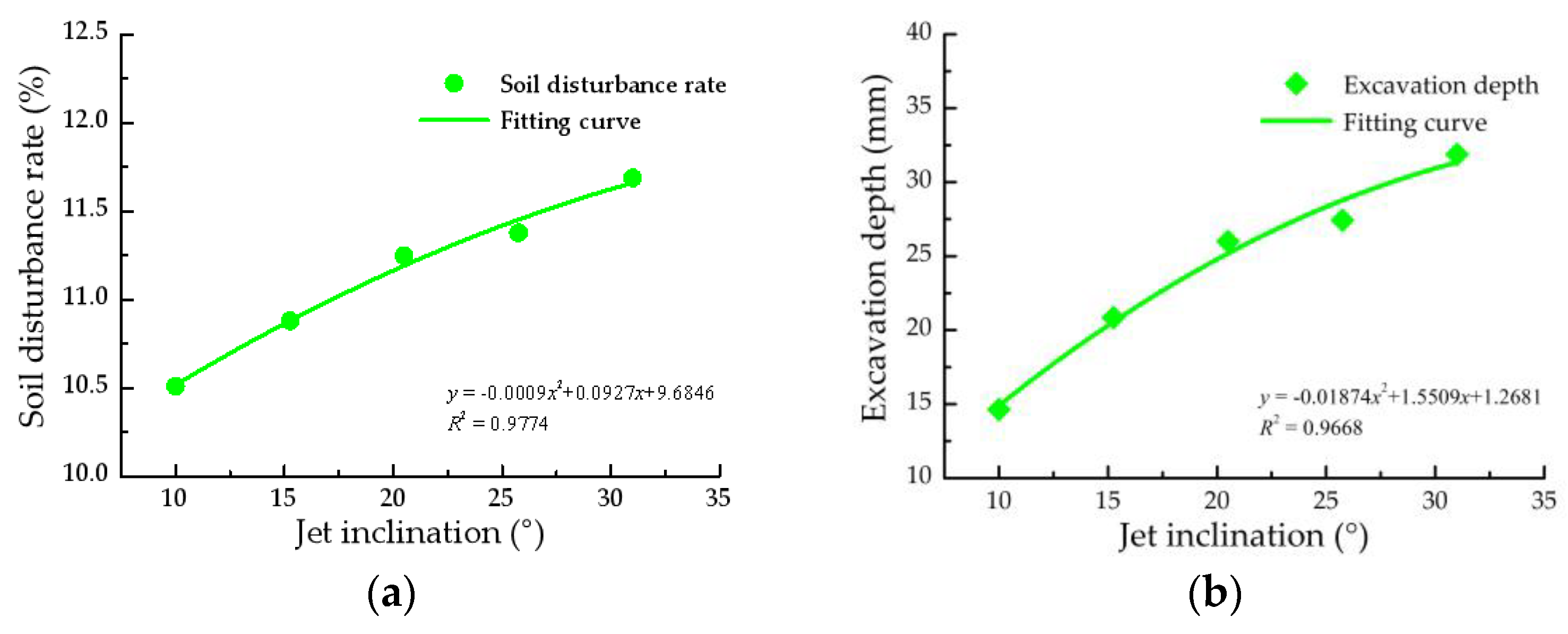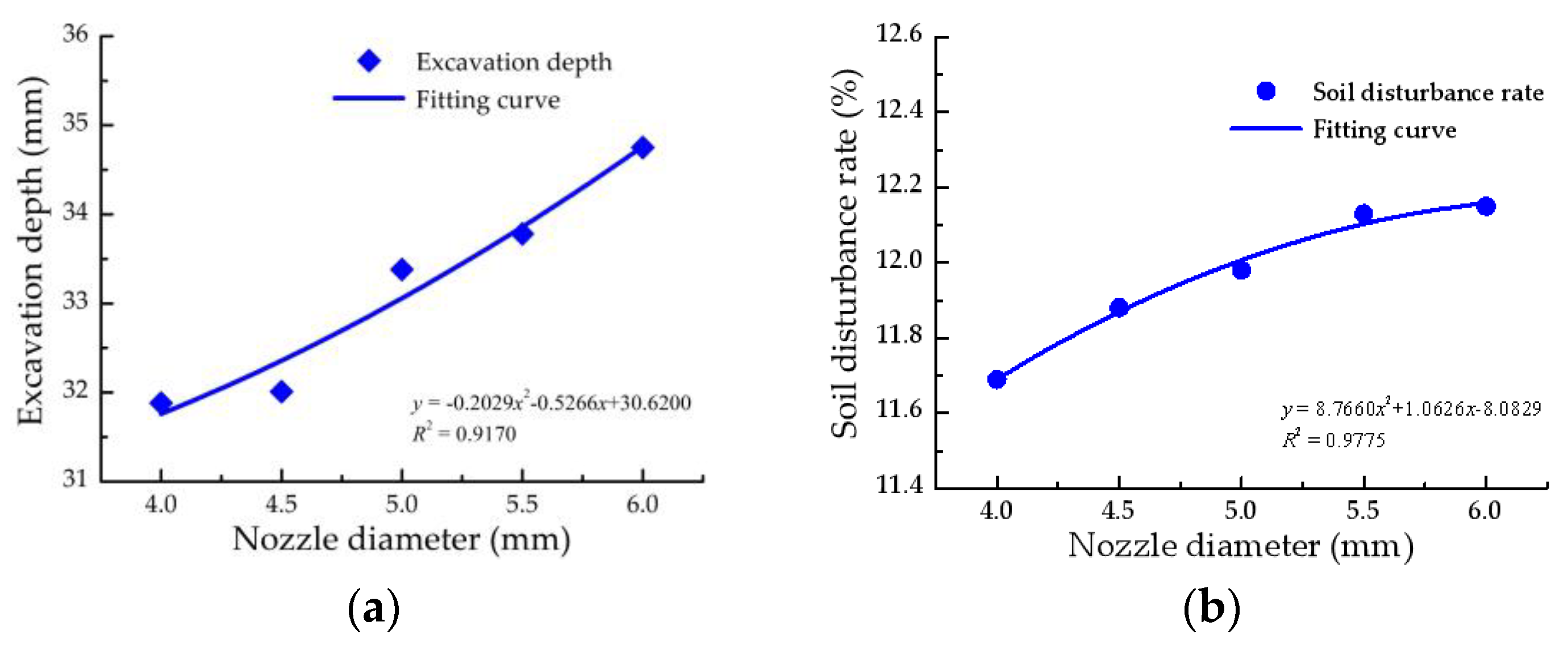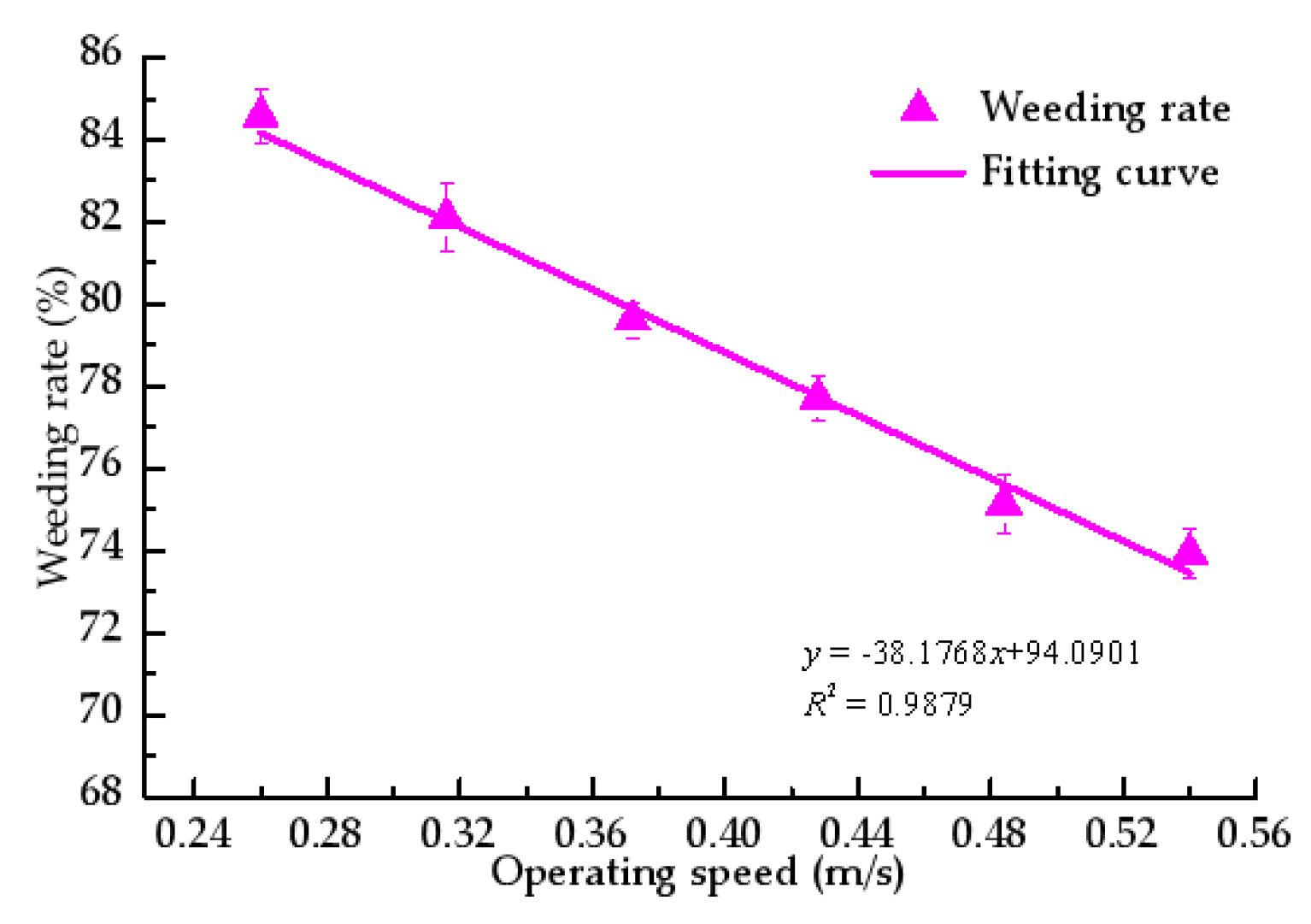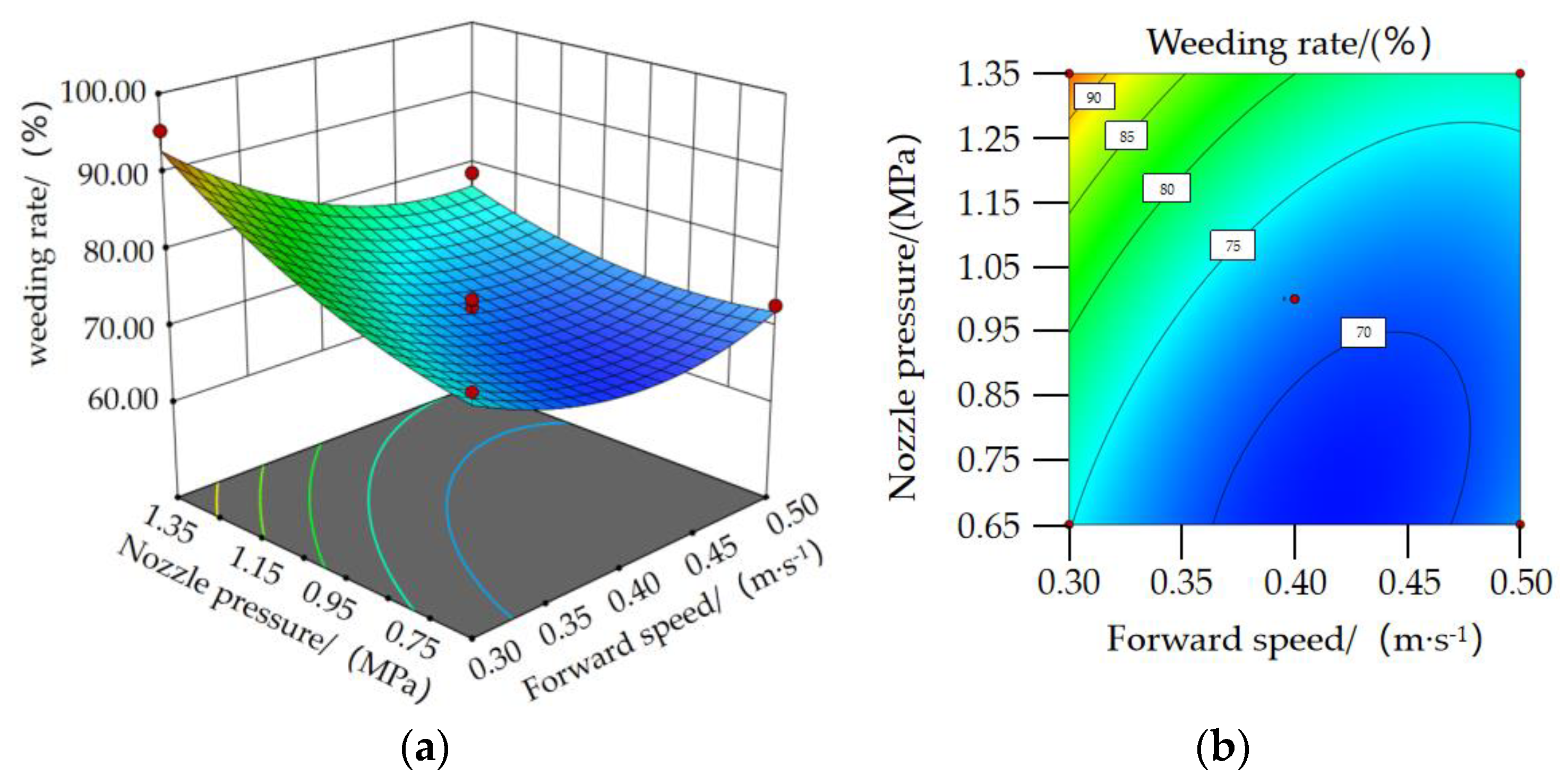1. Introduction
Rice is one of the world’s most important food crops, and ensuring rice production safety is crucial [
1,
2,
3,
4]. Weeds in paddy fields are an important component of agricultural ecology, with over 40 species of weeds such as barnyard grass and wild arrowhead causing harm to rice growth [
5,
6,
7,
8]. Weeds in paddy fields compete with rice for nutrients, sunlight, and water during growth and development, and also promote the spread of diseases and pests, seriously affecting the quality and yield of rice [
7,
8,
9].
To address the serious harm caused by weeds in paddy fields, numerous scholars have conducted research and investigations, and herbicide application is often used to remove weeds and ensure rice yield [
10]. However, this method not only wastes resources but also leads to herbicide residues and soil and water pollution with increasing use of fertilizers, causing environmental damage [
11]. Precision agriculture has become an increasingly important topic in recent years [
12,
13]. Mechanical weeding technologies in precision agriculture have greater potential to reduce agricultural products’ dependence on agricultural chemicals such as herbicides [
14,
15].
Therefore, mechanical weeding, as an environmentally friendly weed control technology, can improve the soil environment and promote the absorption of fertilizer by crop roots while avoiding environmental pollution caused by herbicide residues during weeding [
16,
17]. Many scholars have designed different types of inter-plant mechanical weeders for paddy fields, including umbrella-shaped weeding discs developed by the Japanese companies Misen and Yoma that use composite movements to treat both rice and weeds simultaneously. These discs have a rotary structure and high weeding efficiency, but also high seedling damage rates [
18]. The swing-type weeding comb produced by Kubota uses elastic teeth to interact with the rice soil and weed roots in a vertical reciprocating motion, burying or removing inter-plant weeds. Although this reduces the seedling damage rate, the average weeding rate is only 40% [
19]. Tian et al. [
20] developed an inter-plant rice weeding device with an upright structure and an arc-shaped elastic weeding tooth evenly distributed on a weeding disc [
13]. During operation, the weeding tooth rotates around the vertical axis and moves forward with the machine to complete the inter-plant weeding. Ratnaweera et al. [
21] developed a weeder for paddy fields that can work in three rows at a time, and its weeding device is equipped with two weeding rollers in the same row for compound weeding, but it is not equipped with an inter-plant weeding device. However, this device is prone to unnecessary seedling damage. Due to the problem of seedling or root damage caused by inter-plant weeding devices, as well as their low weeding rates, image recognition technology and electronic sensors have been applied in paddy field weeding equipment to reduce the seedling damage rate. However, due to the interference of factors such as the interlaced growth of rice seedlings and weeds in the field and water surface reflection, the accuracy of plant positioning and identification with sensors is not satisfactory and the effect of inter-plant weeding to avoid seedling damage is not good, which has not been well resolved [
22,
23,
24].
This study proposes an innovative inter-plant weeding device that uses high-pressure, high-speed water jets to erode and crush the soil layer where weeds attach and grow for weed control.
When conducting research on the interaction between mechanical weeding components and soil, many scholars often have often used discrete element software for virtual simulation experiments [
25,
26,
27]. However, these studies have mostly focused on the conditions of dryland soil operation, while the weeding operation environment in paddy fields is more complex, including both a water layer and a soil layer [
25]. Therefore, discrete element virtual simulation software is no longer suitable for this study, and a dynamic analysis software package, LS-DYNA, was selected to construct the virtual simulation experiment environment.
As a mature dynamic analysis software package developed by LSTC (Livermore Software Technology Corporation) in the United States, LS-DYNA is mainly used for nonlinear finite element analysis, which can provide real numerical simulations for problems that are difficult to analyze or are complex and diverse in the real world [
28,
29,
30]. At present, many scholars have extensively carried out numerical simulations using LS-DYNA software for different models and applied it to the research field of agricultural machinery [
22]. Long et al. [
31] used the explicit dynamics analysis module of ANSYS software to simulate and analyze the flow–solid coupling process of a rake-type weeding wheel, and obtained the coupling stress between the weeding wheel and the soil–water model and the soil disturbance rate through software post-processing. This provided theoretical and data references for virtual simulation analysis of different rice fields and rice weeding machines. Wang et al. [
32] conducted virtual simulation analysis on the sugarcane cutting process using LS-DYNA software and established a simulation model of cutting sugarcane with a cutting knife. They analyzed the cutting mechanism of the cutting knife and obtained the trend between blade vibration and work quality during force cutting of sugarcane was obtained.g, providing theoretical and data references for the design of sugarcane cutters. Sun, Zhou, and Lin [
30] established a motion model of three-dimensional elastic projectile bodies in multi-material fluid media using the finite element analysis software LS-DYNA. They performed fluid–solid coupling simulation of the collision process between the projectile and water and obtained the impact of key factors on the water surface of the projectile. This model can also be used to analyze the fluid–solid coupling problems of multiple solid bodies impacting fluids, providing a reference for determining changes in the state of the fluid caused by projectile impact.
In this study, a water jet-based inter-plant weeding device was used as the research carrier. LS-DYNA software was employed to construct a fluid–structure interaction model of the jet–water–soil system. Virtual simulation experiments were conducted to determine the optimal structural parameters of the water jet weeding device to reveal the erosion process of soil by the water jet in the soil–water environment. The optimal operating parameters of the device were determined through bench tests, and the efficacy of the device was verified through field tests.
2. Materials and Methods
2.1. Overall Structure and Working Principle of Water Jet Weeding Device
The structure of the water jet inter-plant weeding device is shown in
Figure 1. It mainly consists of a water tank, a plunger pump, a water supply pipeline, a jet frame, and a nozzle mounting block. The plunger pump is connected to the water tank through a suction pipe. A pressure gauge is installed at the outlet of the plunger pump, which is followed by a water delivery manifold and a three-way valve. The three-way valve is connected to the nozzle and mounted on the nozzle mounting block via a water delivery branch pipe. The jet frame is fixed on the mounting frame, and the nozzle mounting block is symmetrically distributed on both sides of the jet frame. The water jet inter-plant weeding device converts mechanical energy into kinetic energy of the water jet, which is applied to the soil layer where weeds grow and are attached, causing erosion and excavation, and removing weeds from the paddy field.
During operation, the nozzle mounting block with nozzles is installed on the jet frame at a set angle, which can be adjusted. The mounting block is symmetrically placed on both sides of the seedling and located close to the mud surface below the water layer. The plunger pump draws water from the water tank under the drive of a power source and increases the pressure and velocity of the water flow. The water flow is then delivered to the nozzles installed in the nozzle mounting blocks on both sides of the jet frame through the water delivery pipeline. The water jet sprays towards the soil layer, where inter-plant weeds grow and are attached, at a set angle. The soil layer is eroded and broken down into small soil particles, which are carried away by the water flow or directly dissolved in the surface water. Due to the fragile root system of inter-plant weeds, they lose their support force as the soil they attach to is peeled off by the water jet. The inter-plant weeds are then carried away by the water flow along the direction of erosion of the peripheral broken soil particles, as shown in
Figure 2. Under the buoyancy of the water layer, the inter-plant weeds float to the surface of the water, completing the weeding operation. Because of the stratification of paddy soil and the difference in depth and strength of the rooting systems of rice and weeds, under a certain jet impact force and jet angle, the jet erosion action excavates a certain depth and width of soil, which can complete the weeding operation without affecting the stability of the rice seedling root system.
2.2. Analysis of the Optimal Range of Structural Parameters of the Water Jet Weeding Device
2.2.1. Operating Conditions of Water Jet Weeding Device
The rice transplanting time in Heilongjiang Province varies slightly every year and generally falls around mid-May. Transplanting usually lasts for about seven days. With the increase in temperature and sufficient sunlight, weeds in paddy fields grow rapidly, and this is the peak period of weed hazards. The paddy field weeding environment includes barnyard grass, rice seedlings, soil, water, and other factors. The soil can be divided into three layers: mud layer, soil layer, and plow bottom layer. The mud layer is relatively soft, and, according to the literature [
26,
33], the depth of the mud layer,
h1, ranges from 20 to 50 mm; the depth of the soil layer,
h2, ranges from 180 to 200 mm. The rice planting distance,
H1, in Heilongjiang Province is 300 mm, the plant spacing,
H2, is 10–15 mm, the transplanting depth,
h3, is 15–20 mm, and the rice root depth,
h4, is 8–10 mm. At this time, barnyard grass is mostly single-rooted, and the roots mostly grow in the mud layer, with a depth of 8–30 mm. The environment for inter-plant weeding in paddy fields is shown in
Figure 3.
2.2.2. Water Jet Angle
The size of the water jet angle directly affects the area of soil erosion and damage caused by the water jet, thereby affecting the weed control effect. Weed control operation in the inter-plant spaces of paddy fields is limited by the width of rice root growth. To avoid damage to the rice root system caused by inter-plant weeding, the design width of the weeding component is generally below 200 mm, and the remaining 100 mm wide area is the range of weeding between rice plants. Within two weeks after transplanting, the weed root system is single-rooted with a root length of 8 to 30 mm, and the root system mainly grows in the loose mud layer (20 to 50 mm deep). The length of the rice root system is 80 to 100 mm, and the root system grows into a denser soil layer. During the weeding process of the water jet paddy field weeding device, the selection of the water jet angle should not only meet the requirements of the inter-plant weeding field width but also meet the requirements of the weeding depth.
Establish a coordinate system with the mud layer surface as the
x-axis and the rice seedling row as the
y-axis. The intersection of the rice seedling row and the mud layer surface is at point O, as shown in
Figure 4.
Taking the depth of the weed root system as the theoretical excavation depth, the relationship between the water jet angle, weeding width, and weeding depth is expressed as Equation (1):
where
l represents the weeding depth, in meters,
a represents the inter-plant weeding width, in meters, and
θ represents the angle between the water jet and the
x-axis (°).
Given the values of a = 100 mm and between 8 and 30 mm, we can obtain 0.04 ≤ tan θ ≤ 0.6. Then, we can determine that the range of water jet angles is 10° ≤ θ ≤ 31°.
2.2.3. Nozzle Diameter
For the water jet weeding device in the inter-plant environment, weeding occurs in a submerged water environment. When the nozzle diameter is fixed, the effective target range of the submerged water jet is shorter than that of a non-submerged water jet. The nozzle diameter also has a significant impact on the effective target range of the submerged water jet. Therefore, selecting an appropriate nozzle diameter and target range can effectively improve the working efficiency of the submerged water jet.
Under the same conditions, a circular nozzle has a higher jet velocity and turbulence energy compared to nozzles with other outlet shapes. The impact area on the target plate is the widest, inducing a stronger central impact pressure and erosion ability [
34,
35]. Minjie Chen and Xiaobing Pan’s [
36] research showed that for circular nozzles, the erosion performance of the submerged water jet increases with the target distance within the effective target range, showing an increasing then decreasing trend. The range of the effective target distance
L is related to the nozzle diameter as shown in Equation (2).
where
L is the target distance of the water jet submerged by the weeding device, in mm and
d is the diameter of the nozzle in the unit of mm.
In order to fully utilize the erosion performance of the submerged water jet of the weeding device on the soil layer where the weed roots are located, the length of the erosion path of the submerged water jet should be shorter than the effective target distance of the submerged water jet, as shown in
Figure 4.
where
c is the length of the soil eroded in the submerged water jet direction with the unit of mm.
When the known parameter a = 100 mm is substituted into Equations (3) and (4) with l = 8 mm, the resulting value of d is ≥337.3 mm. Similarly, when l = 30 mm, the resulting value of d is ≥388.7 mm. Considering all factors, a value of d ≥ 4 mm is chosen, with a corresponding effective target distance of L ≈ 58 mm. Therefore, the selected nozzle diameter is d = 4 mm.
2.2.4. Soil Penetration Pressure
The destructive effect of a submerged water jet on the weed root–soil layer is not only related to various parameters of the jet but also closely related to the physical and chemical properties of the soil being impacted. According to the research conducted by Fanshan Li and Jiahong Li [
37], the critical penetration pressure
Fcr per unit area of soil is not only related to the impact pressure of the jet but also to the physical properties of soil such as shear strength, permeability, particle size, density, etc., as shown in Equation (5):
where
is the correction coefficient, with
= 1.8 × 10
10 [
38]
is the soil shear strength (kPa),
is the limited particle size of soil particles (mm),
is the dry density of soil (N∙m
−3),
is the soil permeability coefficient (m∙s
−1), and
is the soil’s erosion resistance strength.
By setting
, the critical soil penetration pressure
of the jet-type inter-plant weeding device during weeding operation should satisfy:
According to the literature on soil-related parameters in Northeast China [
39,
40,
41], values were taken for the soil parameters that affect the critical soil failure pressure of water jet weeding:
= 25 kPa,
= 50 mm,
= 1.43 × 10
4 N∙m
−3, and
= 1.17 × 10
−6 m∙s
−1. At a constant flow rate, as the nozzle diameter increases, the outlet pressure decreases and the jet kinetic energy decreases. The critical soil penetration pressure
p0 decreases with the increase in
. When the nozzle opening diameter is
mm and
58 mm, the critical soil penetration pressure can be calculated as
p0 ≥ 0.53 MPa.
2.3. Simulation Results
Based on the analysis of the structural parameters of the water jet inter-plant weeding device, it is known that the nozzle diameter, jet inclination angle, and excavation performance are related. In order to explore the impact of nozzle diameter and jet inclination angle on excavation performance, we selected the experimental factors of a water jet inter-plant weed control device model, which features nozzle diameters of 4.0, 4.5, 5.0, 5.5, and 6.0 mm and jet inclination angles of 10.00, 15.25, 20.50, 25.75, and 31.00° at a pressure of 0.53 MPa. A virtual simulation model of the water jet inter-plant weed control device was established using the explicit dynamics analysis software LS-DYNA, and a finite element fluid–solid coupling numerical simulation analysis was conducted using the ALE (arbitrary Lagrange–Euler) algorithm combined with the single-factor test method.
2.3.1. Experimental Method
Since there is no unified standard for performance evaluation indicators of water–soil flow–solid coupling virtual simulation experiments, referring to the study of Barr et al. [
42], the excavation depth
h and soil disturbance rate
S were used as evaluation indicators. The excavation depth was defined as the distance from the deepest point of excavation to the mud surface measured using the LS-PrePost post-processing module of the LS-DYNA software. The soil disturbance rate
S was defined as the ratio of the number of soil grids
S1 with decreased density due to erosion and the total number of grids
S2 in the water–soil composite model. The soil disturbance rate was calculated using Equation (7).
where
represents the soil disturbance rate, expressed in %,
S1 represents the number of grid units where soil density has decreased, and
S2 represents the total number of soil grid units.
2.3.2. Nozzle Virtual Simulation Model Construction
A three-dimensional model of the nozzle was created using Creo 7.0 software. In order to reduce the computational time of the numerical simulation, the jet nozzle model was simplified and defined as a rigid body material for simulation. The material of the nozzle was defined using the keyword MAT_RIGID, with parameters set as follows: density of 0.00786 g∙mm
−3, elastic modulus of 2.12 × 10
5 MPa, Poisson’s ratio of 0.288 [
19], and a jet source was added. The finite element simulation test was conducted using the unit system of g-mm-ms. The mesh model of the nozzle is shown in
Figure 5.
2.3.3. Water–Soil Coupled Virtual Simulation Model Construction
The water jet inter-plant weeding device operates on the coupled material of water and soil. The soil material selected was the MAT-FHWA-SOIL material in LS-DYNA, and the main values of its parameters were: soil density 0.0016 g mm
−3, soil grain density 0.0027 g mm
−3, bulk modulus 1.56 Mpa, shear modulus 1.42 Mpa, cohesion 0.016 Mpa, internal friction angle 15°, and moisture content 40% [
43], and other parameters are selected referring to the MAT147 test value and considering the soil as an isotropic material [
44]. The water layer material was selected as the MAT-NULL material in LS-DYNA with a density of 0.001 g mm
−3 and a cut-off pressure of −1 × 10
−5 Mpa.
To simulate the actual field operation state, a water–soil model was built using Creo 7.0 software. Two rectangular solids were constructed as the water layer virtual simulation model and the soil virtual simulation model. The soil virtual simulation model was nested inside the water layer model, and meshing and node sharing were carried out using the meshing software hypermesh. Then, the water–soil coupling model was defined with material properties using the LS-PrePost software for pre- and post-processing before being imported into LS-DYNA. To reduce the virtual simulation time, the actual model was simplified to a 1/4 model. The soil layer was defined as 500 mm × 300 mm × 60 mm in length, width, and height, and the water layer was set as 500 mm × 300 mm × 100 mm, as shown in
Figure 6.
The commonly used soil material model in LS-DYNA software is MAT_FHWA_SOIL. Based on the literature [
19,
31,
45,
46], the following parameters were set for the soil: soil density of 1.60 g∙mm
−3, particle density of 0.00273 g∙mm
−3, water content of 40%, cohesive force of 0.0155 MPa, shear modulus of 1.42 MPa, bulk modulus of 1.56 MPa, and internal friction angle of 15°. The remaining parameters were set to the experimental values of material MAT147. Material 9 (MAT_NULL) was used to define the water layer and air layer. The density of the water layer was 1 g∙mm
−3, the cutoff pressure was −1 × 10
−5 MPa, and the viscosity coefficient was 8.68 × 10
−14 MPa·s. The density of the air layer was 1.1 × 10
−6 g∙mm
−1, the cut off pressure was −1 × 10
−9 KPa, and the viscosity coefficient was 1.75 × 10
−17 MPa∙s. The EOS state equation was defined to set the parameters of soil and air materials.
2.4. Bench Test
The working performance of the water jet inter-plant weeding device directly affects the weeding rate of the device. The opening diameter range of the jet mechanism nozzle, the jet angle range, and the outlet pressure range of the water jet inter-plant weeding device were determined through theoretical analysis, and the structural parameters of the key components of the water jet inter-plant weeding device were determined through virtual simulation experiments on the erosion performance of the jet using LS-DYNA, and a prototype was manufactured. A test bench was set up to verify the accuracy of the structural parameters determined through the virtual simulation experiment and to optimize the best working parameter combination of the forward speed and nozzle outlet pressure.
To investigate the working performance of the water jet inter-plant weeding device, high-pole variety Chuangliangyou 4418 rice and barnyard grass were collected from the experimental field of Northeast Agricultural University in Acheng District, Harbin City, Heilongjiang Province, China (45°31′18″ N, 127°2′58″ E). Seedlings and weeds were collected in batches7, 14, and 21 days after heading. Seedlings and barnyard grass seedlings with straight stems and good growth were selected for the test bench experiment on 23 May 2021.
The experimental soil was taken from Jianhua Village, Acheng District, Harbin City, Heilongjiang Province (45°30′41.76″ N, 126°59′54.96″ E), and was a typical northeast sticky black soil. The soil parameters were adjusted based on the soil condition during paddy field cultivation, with soil hardness ranging from 0.6 to 1 MPa and water content ranging from 15% to 25%. The experimental crops were based on rice seedlings and major weeds (e.g., barnyard grass) during paddy field tillage, with an average height of 220–250 mm for rice seedlings. Barnyard grass was grown in seedling trays for 7–14 days, with a height of about 80 mm, a main root length of ≤30 mm, a stem diameter of 1 mm, and 2–3 leaves. To ensure that the soil structure strength around the roots of the barnyard grass was similar to that in the field, the weeds were transplanted with seedling soil. Barnyard grass was planted in the weeding area of the soil trough, with a planting density of 36 plants∙m
−2 and a planting depth of 8–30 mm. To investigate the maximum anti-bending pressure of rice roots and the inter-plant weeding effect with different operation parameters, the rice seedlings were subjected to an anti-bending pressure water pressure test, and barnyard grass was subjected to a reasonable density planting and water jet weeding test. The test site for the stand was the Agricultural Machinery Laboratory of the College of Engineering at Northeast Agricultural University (45°44′27″ N, 126°43′25″ E). The main equipment used in the water jet inter-plant weeding device stand test included an electric motor frequency conversion cabinet control system, a water jet inter-plant weeding device test trolley system, an acrylic water storage tank, and a stainless steel soil trough. The tools used during the testing process included a scraper, a scraper, a stopwatch, and a steel ruler. The AC electric motor frequency conversion cabinet control system (model Y90S-4, Shanghai Libo Electric Motor Co., Ltd., Shanghai, China) was used to control the forward working speed of the test trolley, facilitating the adjustment of the working parameters of the water jet inter-plant weeding device. The water jet inter-plant weeding device test trolley system included a test trolley and a soil trough guide rail, where the test trolley was used to fix the water tank, plunger pump, and jet mechanism, and the soil trough guide rail allowed the weeding device to travel in a straight line. The acrylic water tank was used for the rice root anti-bending pressure water pressure test, and the stainless steel soil trough was used to simulate the soil environment during paddy field cultivation for the rice seedlings and barnyard grass transplanting, as shown in
Figure 7 and
Figure 8.
2.4.1. Single-Factor Test Method for Rice Seedling’s Resistance to Hydraulic Fracturing
The hydraulic fracturing limit test for inter-plant rice root systems is conducted by injecting water through a nozzle at a pressure range of 0.50 to 3.50 MPa, with a fixed interval jet of water for 1 s per group. During the inter-plant jet weeding test, the forward range of the device is set at 0.26 to 0.54 m∙s−1, and the natural drooping width of rice roots in water is measured to be ≤20 mm. Based on the drooping width and the forward speed of the device, the maximum erosion time was calculated to be 0.07 s (for ease of calculation and to expand the range of parameter tests, 1 s is selected). The impact of the water jet on the rice root system is explored.
After 1 s of water jet impact on the rice root system, the number of broken roots in the water tank is counted. Each group of experiments is repeated 5 times and the average value is taken. Broken roots are considered damaged roots.
2.4.2. Single-Factor Test Method for Water Jet-Based Inter-Plant Weed Control Device
A single-factor test was conducted to study the variation in the inter-plant weed control effect under working conditions with a forward speed of 0.26–0.54 m∙s
−1 and a nozzle outlet pressure of 0.5–1.75 MPa (determined according to the range of the inter-plant rice root system’s resistance to impact pressure). The weed control rate was selected as the evaluation index for the inter-plant paddy weed control device’s bench test. The test rectangular water tank area was selected as the testing area. Weeds with intact roots, non-serious stem and leaf breakage, and the ability to continue to survive after the operation of the weeding device were defined as ineffective weed control. Weeds with floating roots on the water surface or completely buried stems, leaves, and roots in the soil were considered effective weed control. The formula for calculating the weed control rate is shown in Equation (8):
where
y1 represents the weed control rate, expressed as a percentage (%),
W1 represents the total number of weeds in the test area before weeding, in units of plants, and
W2 represents the total number of weeds in the test area after weeding, in units of plants.
2.4.3. Multi-Factorial Test Method for Water Jet-Based Inter-Plant Weeding Device
The multifactorial test method uses a quadratic rotation combination orthogonal design test scheme to analyze the interactive effects of nozzle outlet pressure and forward speed on weeding performance. Forward speed and nozzle outlet pressure are taken as experimental factors, and weeding rate was used as the performance indicator for multi-factorial testing.
Based on the single-factor test results of forward speed and nozzle outlet pressure for the inter-plant weeding device, the experimental factor variation range for the test bench was selected. On this basis, a two-factor five-level quadratic rotation orthogonal combination design experiment was adopted to study the optimal working parameters of the device. During the experiment, the weeding rate data of the device were continuously recorded, and each group of tests was repeated 3 times to obtain the average value, with 1 group for every 4 m of test distance. The coded levels of the designed experimental factors are shown in
Table 1.
2.4.4. Field Test Method
In order to investigate the field operation performance of the water jet inter-plant weeding device for paddy fields, the integrated water jet inter-plant weeding device was configured, and the forward speed of the machinery was taken as the experimental factor and the weeding rate as the experimental indicator. The field performance test was conducted by considering the inter-plant weeding status before and after weeding.
The field test was conducted on the 14th day after rice transplanting, from 15 June 2021 to 21 June 2021, in Tuanshe Village, Acheng District, Harbin City, Heilongjiang Province, China (45°31′56.28″ N, 127°10′06.96″ E). The water depth was 3050 mm and the mud foot depth was 120,150 mm. The height of the seedlings was 210~240 mm, and the row spacing and plant spacing were 300 mm and 120 mm, respectively [
38]. No herbicide sealing treatment was conducted in the field, and the main weeds were barnyard grass with a small amount of wild amaranth. The average density of barnyard grass was 38 plants∙m
−2. The field operation situation of the field test is shown in
Figure 9a.
The field test equipment was operated by a Kubota 2ZGQ-6D (NSPU-68CMD) rice transplanter connected by a three-point suspension.. The driver keeps the transplanter running in a straight line during the operation to avoid affecting the accuracy of the test results. The main equipment used in the experiment included a steel ruler (range: 30 cm), a tape measure (range: 10 m), a stopwatch, a water pump, a calibration pole, and a digital camera. The actual field operation situation is shown in
Figure 9b.
The water jet inter-plant weeding device was integrated into the rice transplanter, and the forward speed was controlled at three different speeds (0.3 m∙s−1, 0.4 m∙s−1, and 0.5 m∙s−1) to ensure consistency in the working parameters of the device. Each group was repeated three times, and the test results were averaged.
Prior to the experiment, the paddy field was evenly divided into nine areas, with the front and rear 5 m serving as the test buffer zone to ensure the machine entered the test area at a constant speed and stopped in a timely manner. The middle 15 m served as the test area. The number of weeds in the test area was counted and marked before weeding. After weeding, the remaining weeds in the weeded area were counted. The plant damage rate can be obtained by calculating the total number of seedlings within the weeding range before the experiment and the number of damaged seedlings after weeding.
In this study, we designed a water jet inter-plant weed control device and elaborated the working principle, then analyzed the working mechanism, obtained the main parameters affecting the operational performance, constructed a water–soil fluid–solid coupling virtual simulation model using LS-DYNA software, and designed a virtual simulation test, bench test, and field test program.
4. Conclusions
In this study, we innovatively designed a water jet-type inter-plant weeding device for paddy rice seedlings and weeds by analyzing the structure and water jet characteristics of rice seedlings and weeds, combined with the principle of geotechnics, to obtain the key factors affecting the performance of water jet weeding operation: jet inclination, nozzle opening diameter, and critical breaking pressure, and used the display dynamics software LS-DYNA to conduct a water jet weeding mechanism study. The water jet weeding process was analyzed, and the optimal combination of parameters of the water jet-type inter-plant weeding device was explored based on a bench test and field test, and the following conclusions were obtained.
The range of values for the jet inclination angle of the water jet-type inter-plant weeding device is 10° ≤ θ ≤ 31°, the range of values for the nozzle opening diameter is d ≥ 4 mm, and the critical nozzle breaking pressure is 0.53 MPa.
The single-factor virtual simulation test of water–soil fluid–solid coupling shows that when the nozzle diameter is constant, with the increase in the jet inclination angle, the excavation depth h and soil disturbance rate S increase; when the jet inclination angle is set, with the increase in the nozzle diameter, the excavation depth h and soil disturbance rate S increase. The optimal combination of structural parameters is nozzle opening diameter d = 4 mm, jet inclination angle θ = 31°, excavation depth in this state h = 31.88 mm, soil excavation depth S = 31.88 mm, and soil disturbance rate S = 11.69%.
The results of the ultimate hydraulic pressure test of rice root systems against impact showed that the ultimate pressure of rice root systems against breakage was 1.5 Mpa.
The bench test results of the water jet-type inter-plant weeding device showed that the device had the best weeding operation performance, with a 92.78% weeding rate, when the forward speed was 0.3 m/s and the nozzle outlet pressure was 1.5 MPa. The field performance test results showed that the maximum average weeding rate of the water jet-type inter-plant weeding device was 90.16% and the seedling damage rate was 1.80% when the forward speed was 0.3 m/s, which satisfied the weeding operation requirements.
This study explores the possibility of weeding operation using a water jet and provides a reference for the innovative design of mechanical weeding devices to promote inter-plant weeding in paddy fields.

